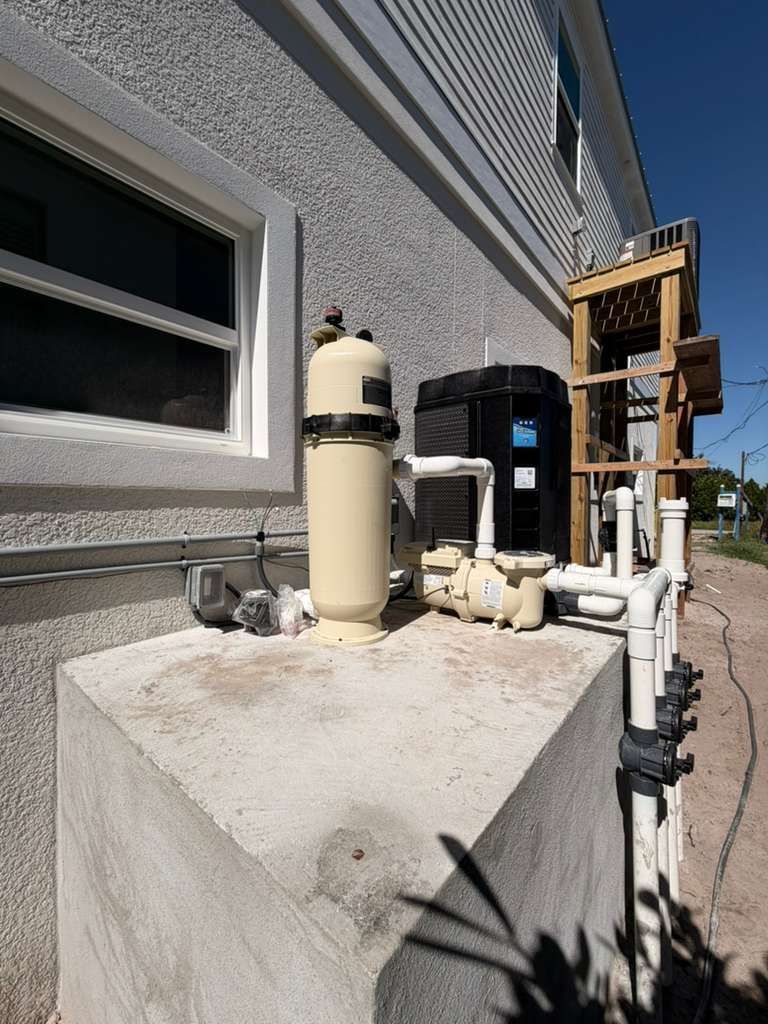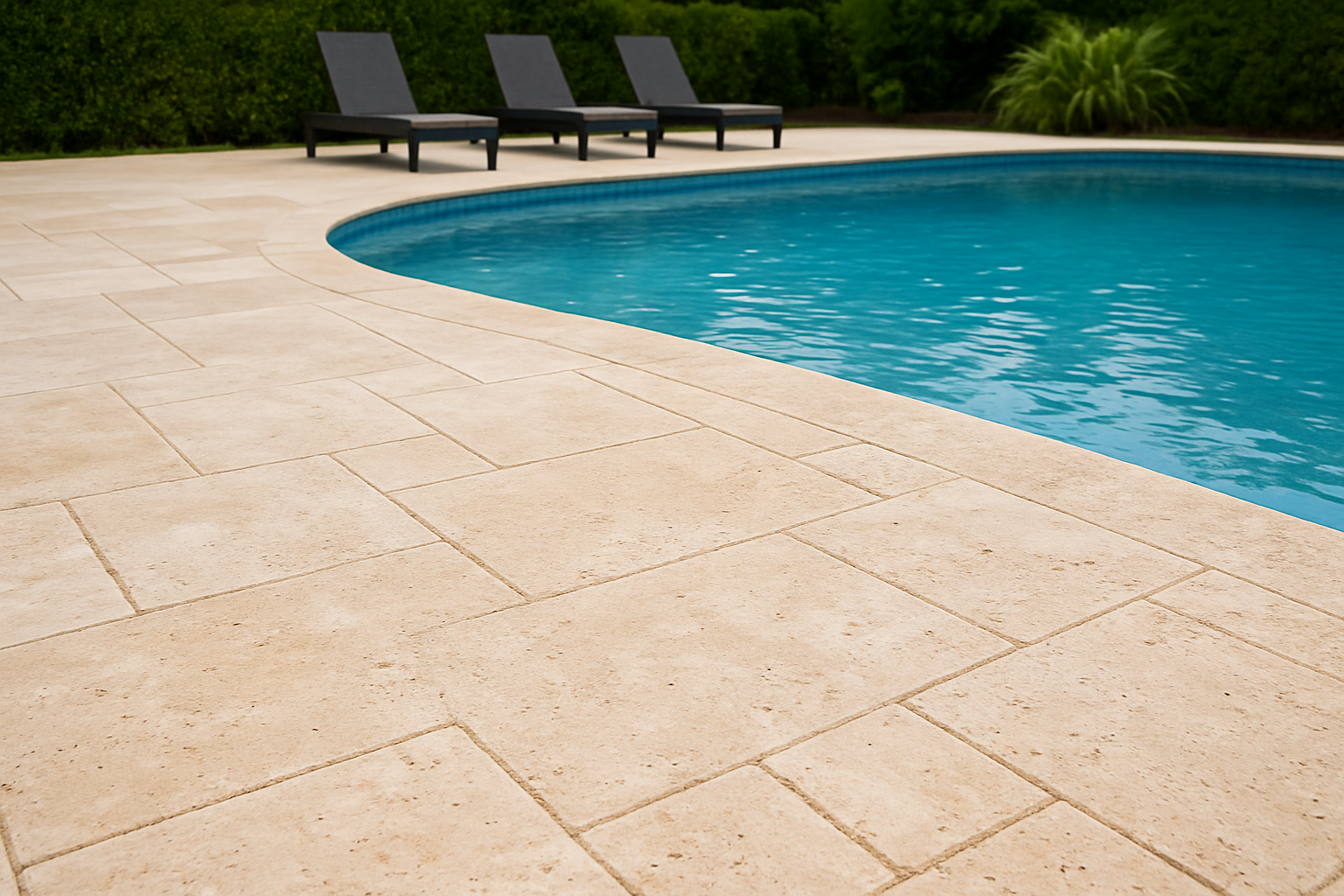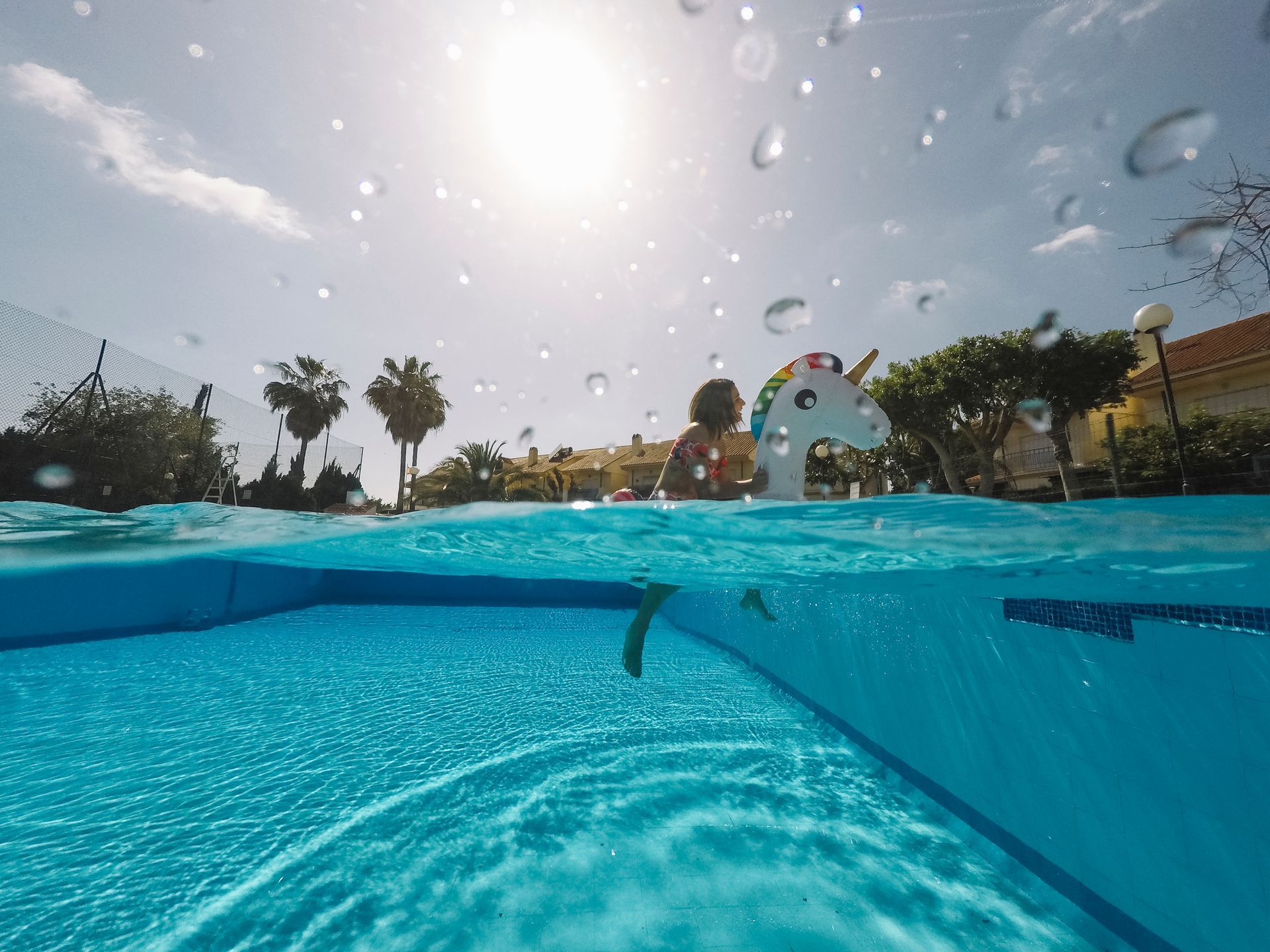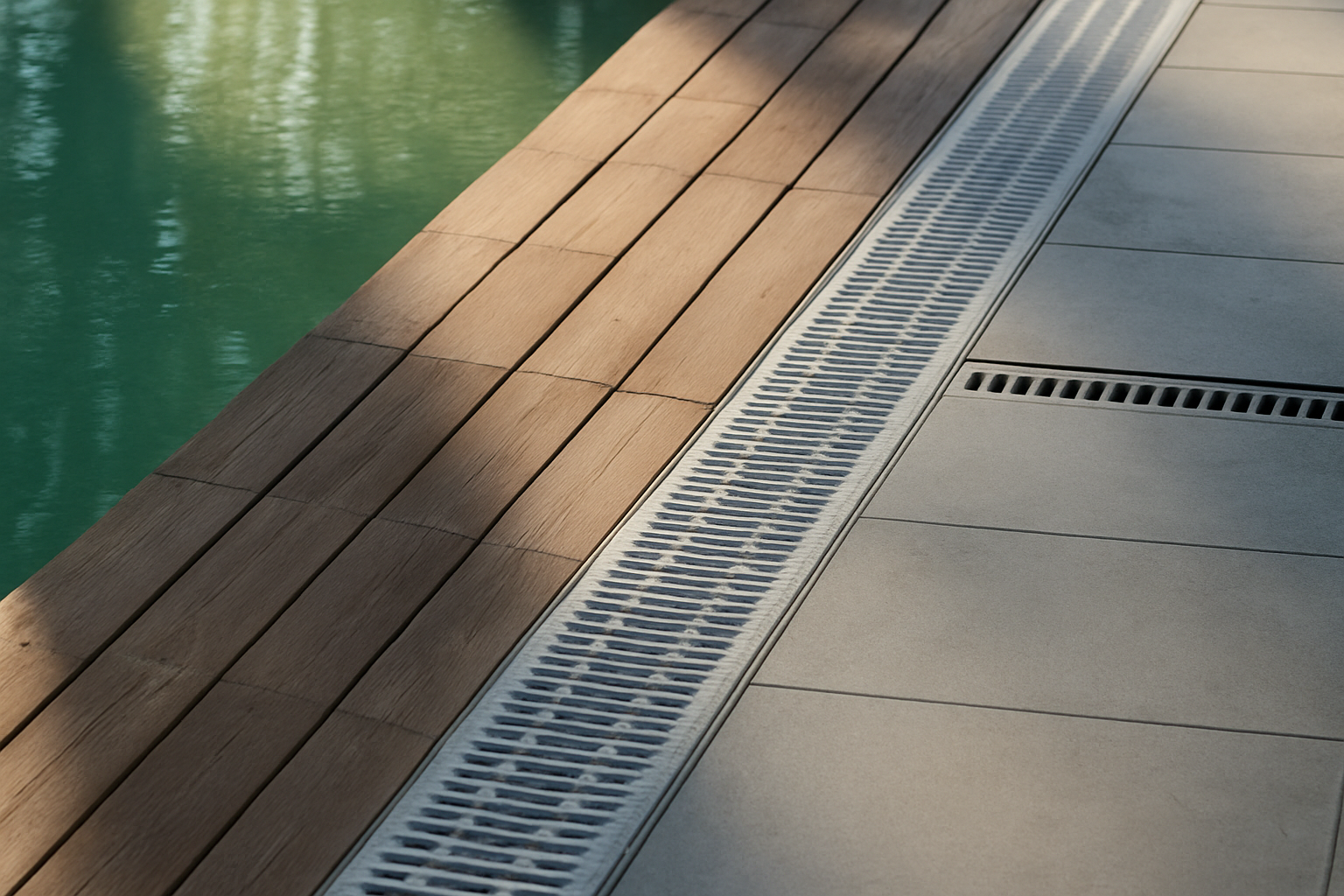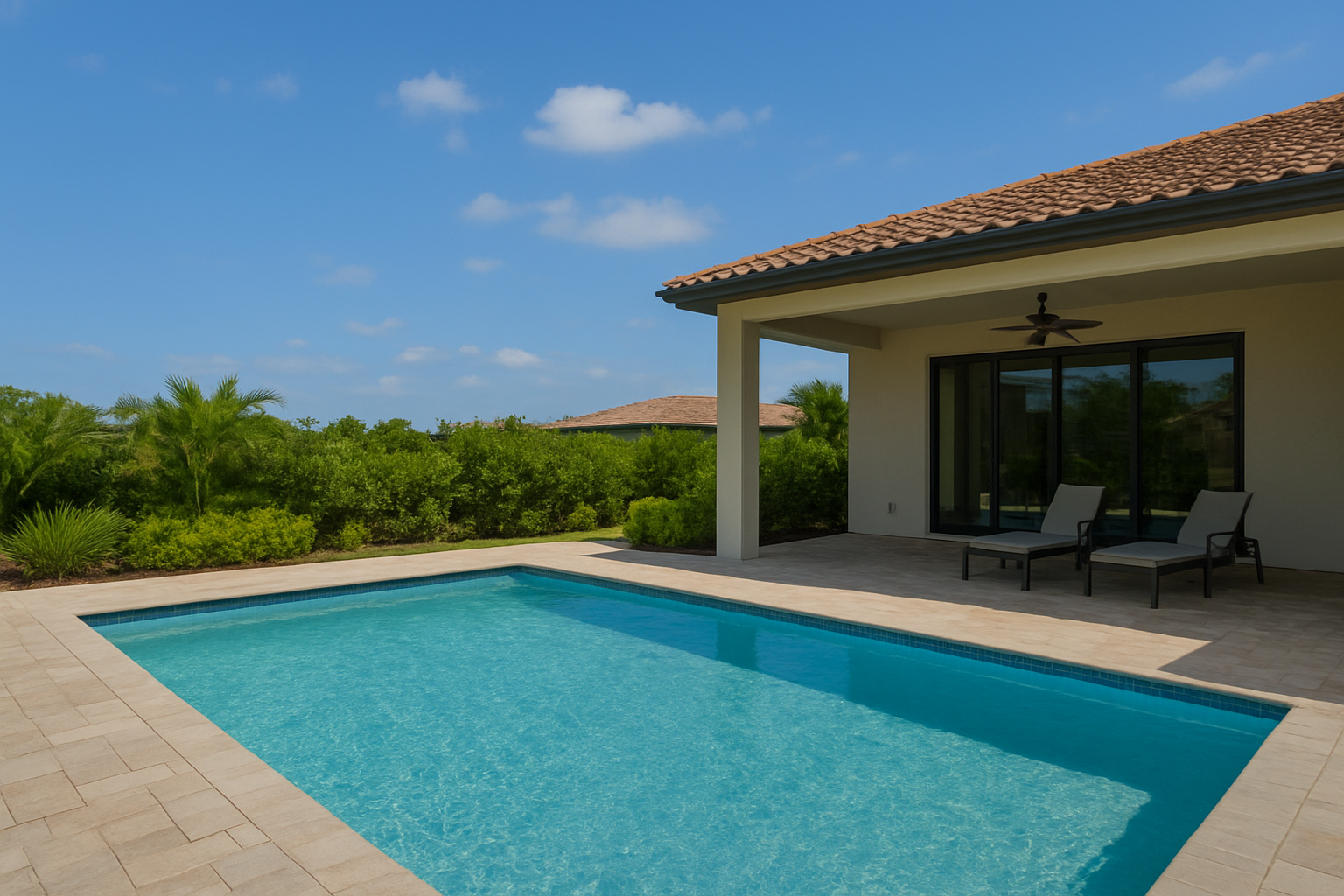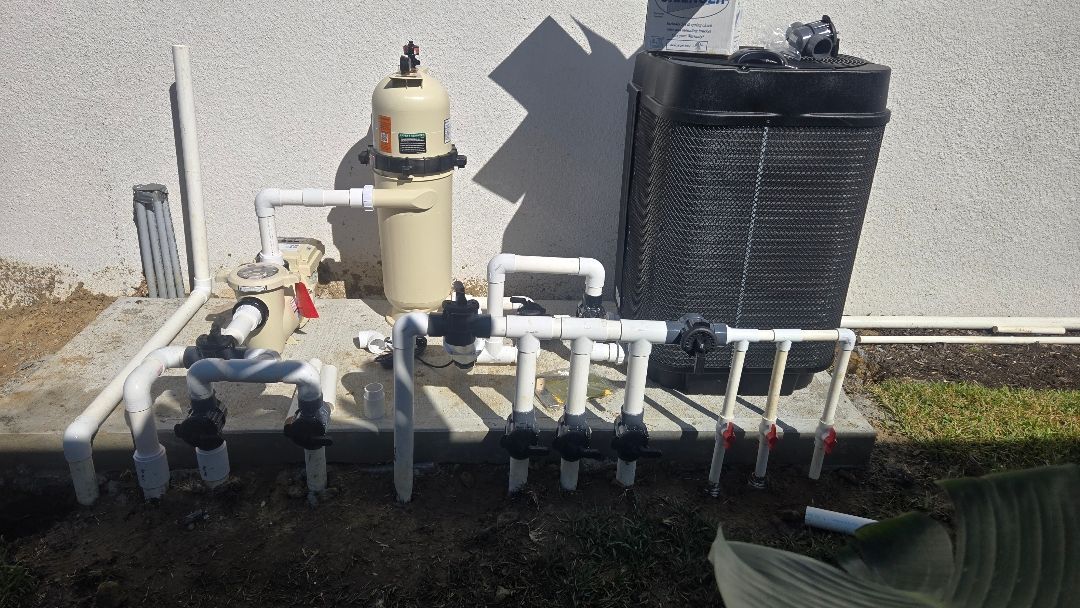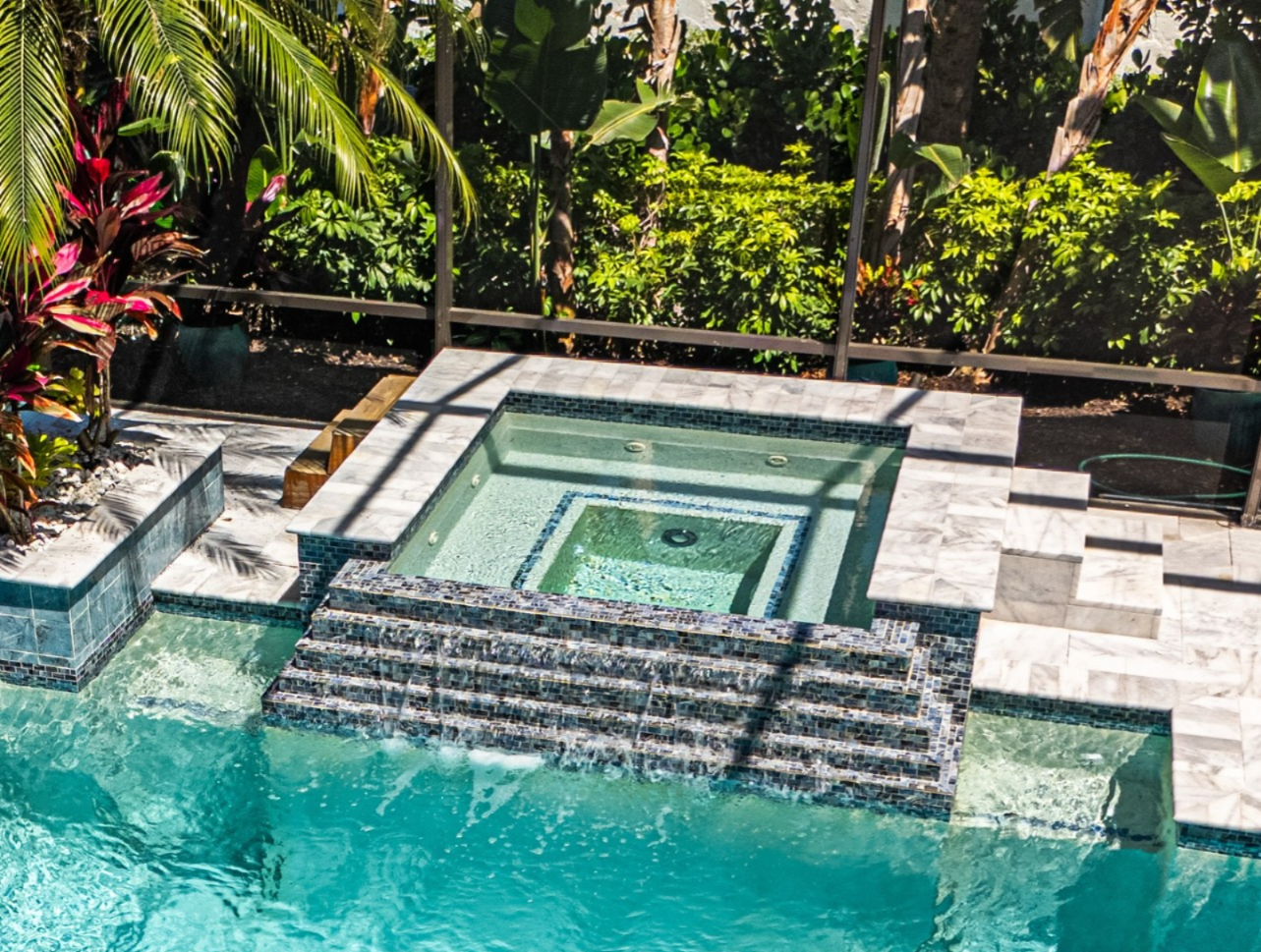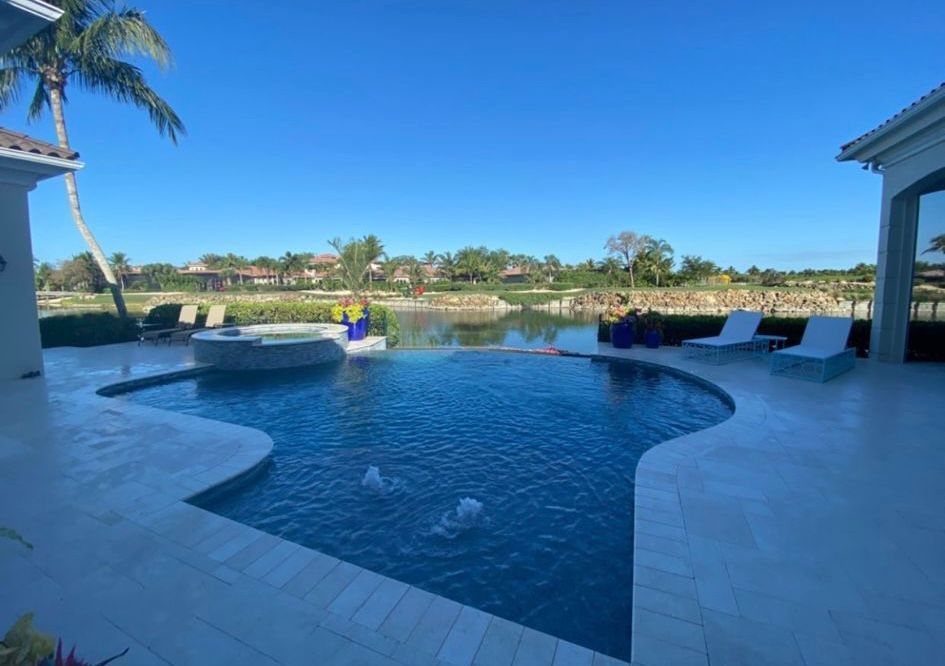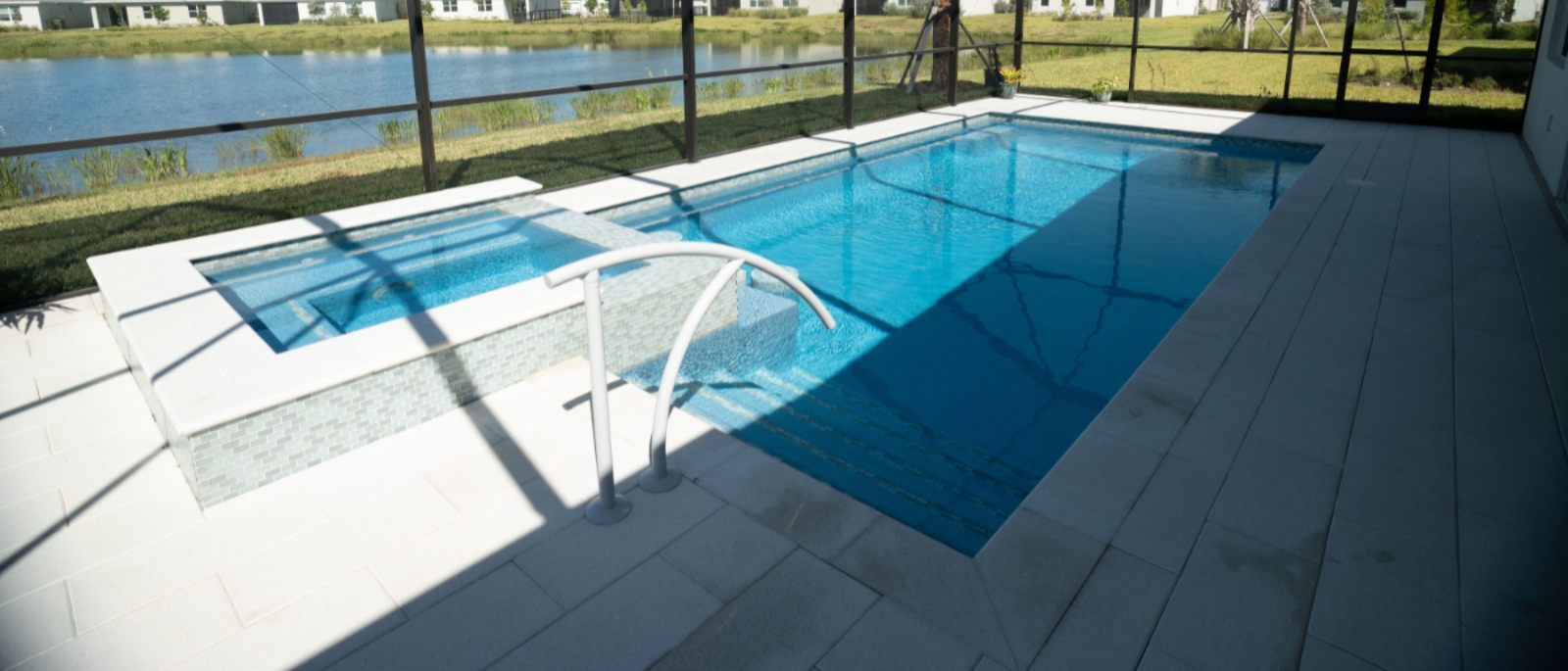A COMPREHENSIVE GUIDE FOR WINTERIZING YOUR POOL
In this comprehensive guide, we'll walk you through everything you need to know about winterizing your pool, from timing and essential supplies to step-by-step instructions and common mistakes to avoid. This crucial process is not just a matter of closing up for the season; it's about protecting your investment and ensuring a smooth reopening when warmer days return.
Winterizing your pool involves several key steps:
1. Thorough Cleaning
2. Water Chemistry Balancing
3. Lowering Water Level
4. Draining Equipment
5. Adding Winter Chemicals
6. Covering the Pool
Why Winterize Your Pool?
Winterizing your pool is not just a recommended practice; it's an essential step for pool owners in areas that experience freezing temperatures. Winterizing your pool is a vital step in pool maintenance that offers several key benefits:
- Prevent System Damage: Pool pumps, filters, and heaters are not designed to withstand freezing temperatures. Water left in these systems can freeze, expand, and cause cracks or breaks in vital components.
- Extend Equipment Lifespan: By properly draining and storing your pool equipment, you protect it from unnecessary wear and tear during the off-season, potentially adding years to its lifespan.
- Maintain Warranty Compliance: Many manufacturers require proper winterization to maintain equipment warranties, making this process crucial for long-term protection of your investment.
Prevent Damage from Freezing
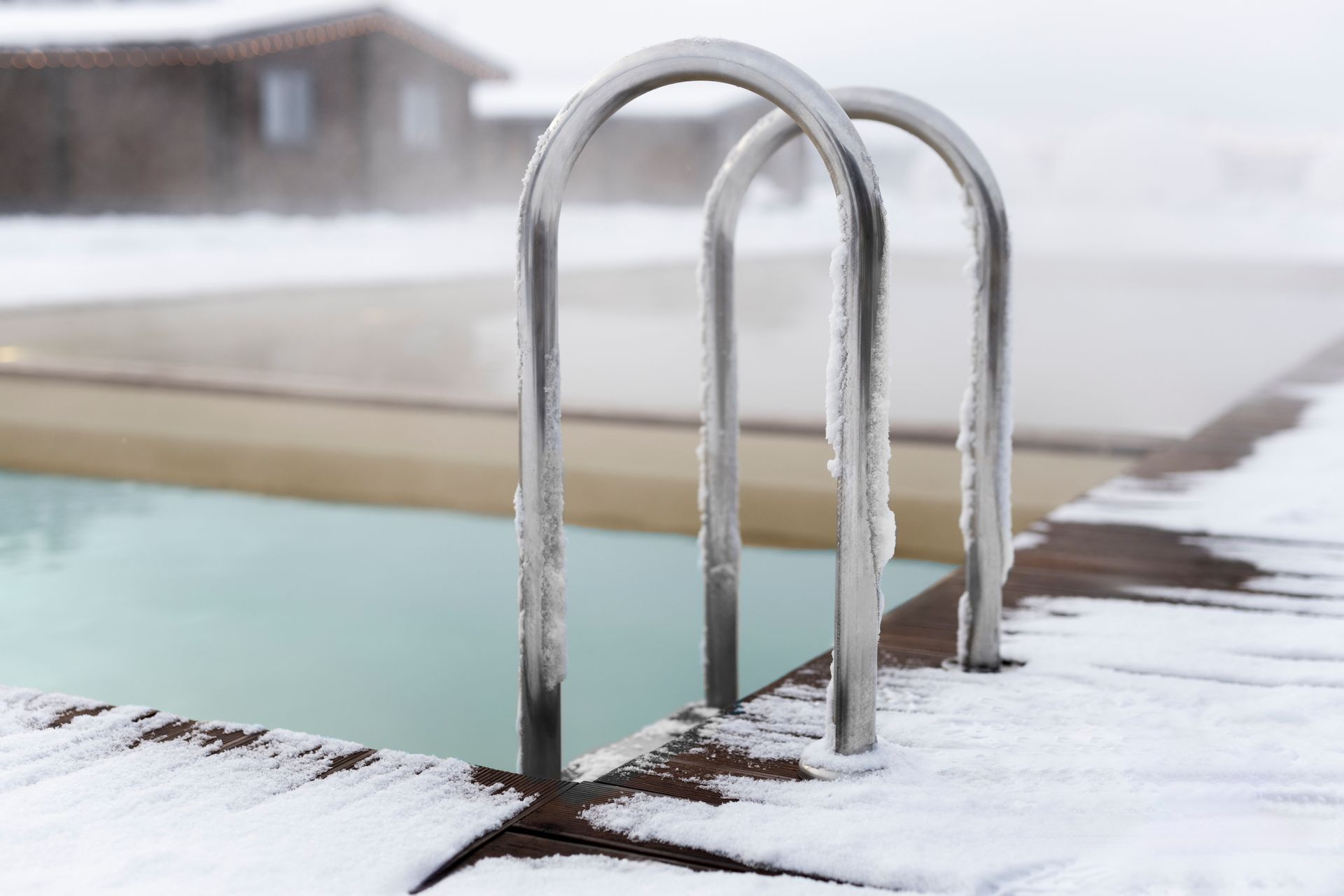
Avoid Structural Damage: Water expands as it freezes, which can cause significant damage to your pool's structure, including cracked tiles, split pipes, and damaged skimmers.
Protect Pool Surfaces: Proper chemical balance and water level management during winterization help prevent damage to pool liners, concrete, or other surface materials.
Safeguard Plumbing: Draining water from pipes and adding antifreeze (where appropriate) prevents burst pipes, a common and costly problem in improperly winterized pools.
Save Money on Maintenance
- A well-winterized pool requires less cleaning and fewer chemicals when reopening, potentially saving hundreds of dollars in maintenance costs.
- By avoiding freeze damage to equipment and structures, you sidestep expensive repair or replacement costs that can run into thousands of dollars.
- Shutting down pool systems for the winter eliminates unnecessary energy consumption, reducing your overall utility costs.
- Proper winterization reduces the need for shock treatments and algaecides in the spring, saving on chemical costs and being more environmentally friendly.
When to Winterize Your Pool
Timing is crucial when it comes to winterizing your pool. Closing too early can lead to algae growth, while waiting too long risks damage from freezing temperatures. Let's explore the key factors to consider when deciding when to winterize your pool:
Water Temperature: The ideal time to winterize is when your pool water consistently stays below 65°F (18°C). At this temperature:
- Algae and bacteria growth slows significantly
- Chemical reactions in the water become less active
- The risk of developing water balance issues decreases
Air Temperature: Pay attention to nighttime temperatures. When overnight lows consistently dip below 50°F (10°C), it's time to start the winterization process.
Daytime Highs: Even if nights are cool, wait until daytime temperatures are regularly below 65°F (18°C). This ensures the water temperature has truly cooled down.
Essential Supplies for Pool Winterization
Proper pool winterization requires a specific set of tools and chemicals. Having all necessary supplies on hand before you begin the process ensures a smooth and effective winterization. Here's a comprehensive checklist of essential items you'll need:
Pool Water Testing Kit
- pH test strips or liquid test kit
- Alkalinity test
- Chlorine test
Pool Chemicals
- pH increaser and decreaser
- Alkalinity increaser
- Pool shock (calcium hypochlorite)
- Winter algaecide
- Pool antifreeze (for plumbing lines, if needed)
Cleaning Supplies
- Pool brush
- Pool vacuum or leaf net
- Skimmer net
Winterizing Plugs and Covers
- Return jet plugs
- Skimmer plugs or skimmer plate
- Ice compensator (for above-ground pools)
- Expansion plugs for plumbing lines
Pool Cover and Accessories
- Winter pool cover (mesh or solid)
- Cover clips or wind blocks
- Water bags or cover weights
- Pool cover pump (for solid covers)
Plumbing and Equipment Tools
- Wrench set
- Screwdriver set
- Pliers
- Thread seal tape (Teflon tape)
Blower or Shop Vac
- For blowing out plumbing lines
Pool Pillows (for above-ground pools)
- To support the cover and prevent ice damage
Safety Equipment
- Safety goggles
- Chemical-resistant gloves
Lubricant
- Silicone lubricant for o-rings and gaskets
Storage Containers
- For storing removable pool parts
Antifreeze Tester (if using antifreeze)
- To ensure proper concentration
Pool Water Level Marker
- To monitor water level throughout winter
Winterizing Chemical Kit (optional)
- Pre-packaged kit with essential chemicals
Step-by-Step Guide to Winterizing Your Pool
Properly winterizing your pool involves several crucial steps. Following this guide will help ensure your pool remains in excellent condition throughout the winter months and is ready for a quick and easy opening in the spring.
Clean the Pool Thoroughly
- Remove Debris
- Vacuum the Pool
- Clean the Waterline
- Backwash the Filter
Test and Balance Water Chemistry
Test the Water: Use a pool water testing kit to check pH, alkalinity, and chlorine levels.
Adjust Chemical Levels
- pH should be between 7.2 and 7.6
- Alkalinity should be between 80 and 120 ppm
- Chlorine should be between 1 and 3 ppm
Shock the Pool: Add pool shock according to the manufacturer's instructions to eliminate any remaining contaminants.
Lower the Water Level
For Pools with Skimmers: Lower the water level to about 4-6 inches below the skimmer opening.
For Above-Ground Pools: Lower the water level to about 4-6 inches below the return jets.
Drain and Clean Pool Equipment
Turn Off All Pool Equipment: Shut off the pump, filter, heater, and any other electrical equipment.
Drain the Pump and Filter: Remove drain plugs and allow all water to drain out. For sand or DE filters, backwash one final time before draining.
Clean the Filter: For cartridge filters, remove and clean the cartridge thoroughly. For sand filters, consider if it's time to replace the sand.
Blow Out the Lines: Use a shop vac or blower to remove water from all plumbing lines. Install winterizing plugs in return jets and skimmers.
Drain the Heater: Follow manufacturer instructions to properly drain your pool heater.
Add Winter Chemicals
Add Winter Algaecide: Pour the recommended amount of algaecide into the pool water.
Add Pool Antifreeze: In colder climates, add swimming pool antifreeze to plumbing lines according to product instructions.
Distribute Chemicals: Use a pool brush to distribute the chemicals evenly throughout the pool.
Install Pool Cover
Inspect the cover for any tears or damage and repair if necessary. Carefully spread the cover over the entire pool surface. For above-ground pools install air pillows in the center of the pool to absorb ice expansion.
For in-ground pools, use water bags or cover locks to secure the edges. For above-ground pools, use a cable and winch system to tighten the cover. For solid covers you can place a cover pump in the center of the pool cover to remove rainwater and melted snow.
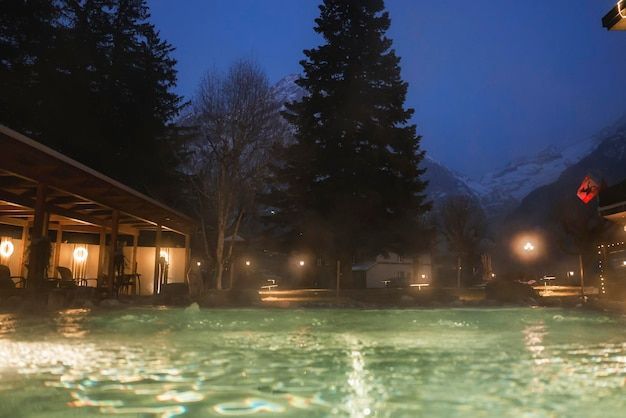
Common Mistakes to Avoid When Winterizing
Even experienced pool owners can make mistakes during the winterization process. Being aware of these common pitfalls can help you avoid potential problems and ensure your pool is properly protected throughout the winter months.
- Failing to properly drain and protect skimmer boxes.
- Forgetting to blow out and plug return lines.
- Neglecting to lower the water level below pool lights.
- Leaving automatic cleaners in the pool or failing to properly store them.
- Forgetting to remove or protect accessories like diving boards and slides.
- Leaving metal components like ladders and handrails exposed to freezing temperatures.
- Failing to remove and properly store the salt cell.
- Closing the pool while water temperatures are still warm.
- Delaying winterization until after the first freeze.
- Trying to complete all winterization steps in one day.
- Adding winterizing chemicals too soon before covering the pool. Remember to allow winterizing chemicals to circulate for at least 24 hours before covering the pool.
- Assuming the pool needs no attention once winterized.
- Waiting too long to start the de-winterization process in spring.
Proper pool winterization is not just a recommended practice—it's an essential investment in the longevity and health of your pool. A well-winterized pool is protected from freeze damage, which can lead to costly repairs or even pool replacement.
Remember, while the winterization process may seem daunting, especially for new pool owners, the benefits far outweigh the effort involved. By following the steps outlined in this guide and maintaining regular checks throughout the winter, you're ensuring that your pool remains in perfect conditions for years to come.
Contact Gold Standard Pools for a successfully pool closure and a worry-free winter season!



